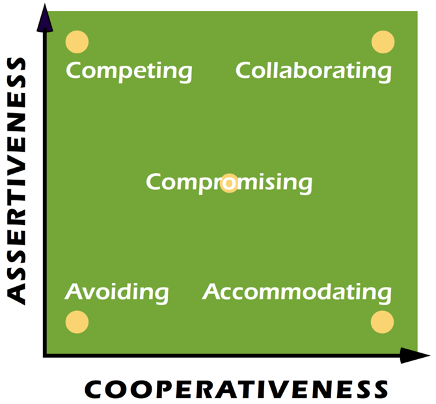Henry runs a small law practice. He has around 12 staff. It’s a family practice. His wife has worked as his assistant and manager for a long period of time. A family friend is the bookkeeper. The practice functions well. Katherine is a lawyer at the firm. She has been working with Henry for about 3 years and over time there has been an unspoken conflict festering. The bookkeeper has taken it upon herself to check her work and make sure she’s not falsely recording Henry’s time as her own. The more senior Katherine becomes the worse it gets. Katherine has raised this with Henry. She can’t understand what the issue is and she’s second guessing herself. Henry says he will sort it out. He says “I’ve told them not to do that”. This startles Katherine as it means Henry has been aware of it for some time. Henry assures Katherine he will talk to the bookkeeper. Katherine isn’t quite sure if this ever happened, so continues to second guess her own file management.
Breaking this scenario down, we see these issues…
The bookkeeper continues her behaviour unchecked thinking she’s doing the right thing in reporting to Henry. If Henry hasn’t raised the issue, she may not know the impact of her behaviour. If Henry has raised the issue, and she continues, there are bigger issues here.
Katherine continues to feel insecure, untrusted, anxious in her role each day.
Henry hasn’t managed the conflict at all.
Before we get to how Henry could have handled this scenario better, lets tap into what happens when conflict is not managed.
Unmanaged conflict can have far reaching effects, not only in the workplace, but at home. In the workplace the relationship between the parties will remain strained until the issue is dealt with. The issues will continue to bubble away “beneath the surface”. There may be a verbal altercation if left unchecked for too long.
Anxiety and insecurity will continue to mount for the team member. It may be they no longer enjoy coming to work. Increased sick days may start occurring. The anxieties may seep into home life and impact their home life. The team member may resign.
How can leaders manage conflict? What steps could Henry take to resolve the conflict in our scenario?
Thomas & Kilmann* are leaders in the assessment of conflict resolution. They focus on five strategies or approaches leaders can use to resolve conflicts. The manner in which conflicts can resolve is seen as a balance between cooperativeness and assertiveness. Within those dimensions sit the five strategies (best explained in this diagram):
The five stages are described as follows **:
Competing is assertive and uncooperative—an individual pursues his own concerns at the other person’s expense. Here you might feel like you are “standing up for your rights” or defending your position. You may even be trying to win.
Accommodating is unassertive and cooperative—the complete opposite of competing. When accommodating, the individual neglects his own concerns to satisfy the concerns of the other person; there is an element of self-sacrifice in this mode.
Avoiding is unassertive and uncooperative—the person neither pursues his own concerns nor those of the other individual. Thus, he does not deal with the conflict.
Collaborating is both assertive and cooperative—the complete opposite of avoiding. Collaborating involves an attempt to work with others to find some solution that fully satisfies their concerns. It means digging into an issue to pinpoint the underlying needs and wants of the two individuals.
Compromising is moderate in both assertiveness and cooperativeness. The objective is to find some expedient, mutually acceptable solution that partially satisfies both parties. In some situations, compromising might mean splitting the difference between the two positions, exchanging concessions, or seeking a quick middle-ground solution
Returning to Henry it is likely that he was avoiding the issue altogether “diplomatically sidestepping the issue” or “postponing an issue” until a later time. It wasn’t a helpful approach for Katherine and it reinforced the bookkeepers behaviour.
Understanding the different ways in which conflicts are resolved will make you aware of the role you play in exacerbating or ultimately resolving the conflict.
Before we sign off it’s important to note that conflict isn’t always bad. Understanding the basis for the conflict, that is what is at the heart of the issue, can be a catalyst for change for the organisation. Analysing the cause of conflict may enhance the productivity of the team. It may have the effect of thinking about different ways to do things, processes and even structures within the organisation. Certainly, the ability to air feelings is a positive outcome along with allowing others to understand where they are coming from.
Whatever the positives that may come from conflict, left unchecked there can be detrimental impacts on the organisation and more importantly individual team members. Dealing with the conflict as soon as it arises in a manner which provides all concerned with the ability to be involved is key in ensuring your team members continue to thrive in your organisation.
~~
* See more about the Thomas Kilmann Conflict Diagnostic Tool here: https://kilmanndiagnostics.com/overview-thomas-kilmann-conflict-mode-instrument-tki/
** adapted directly from https://kilmanndiagnostics.com/overview-thomas-kilmann-conflict-mode-instrument-tki/





